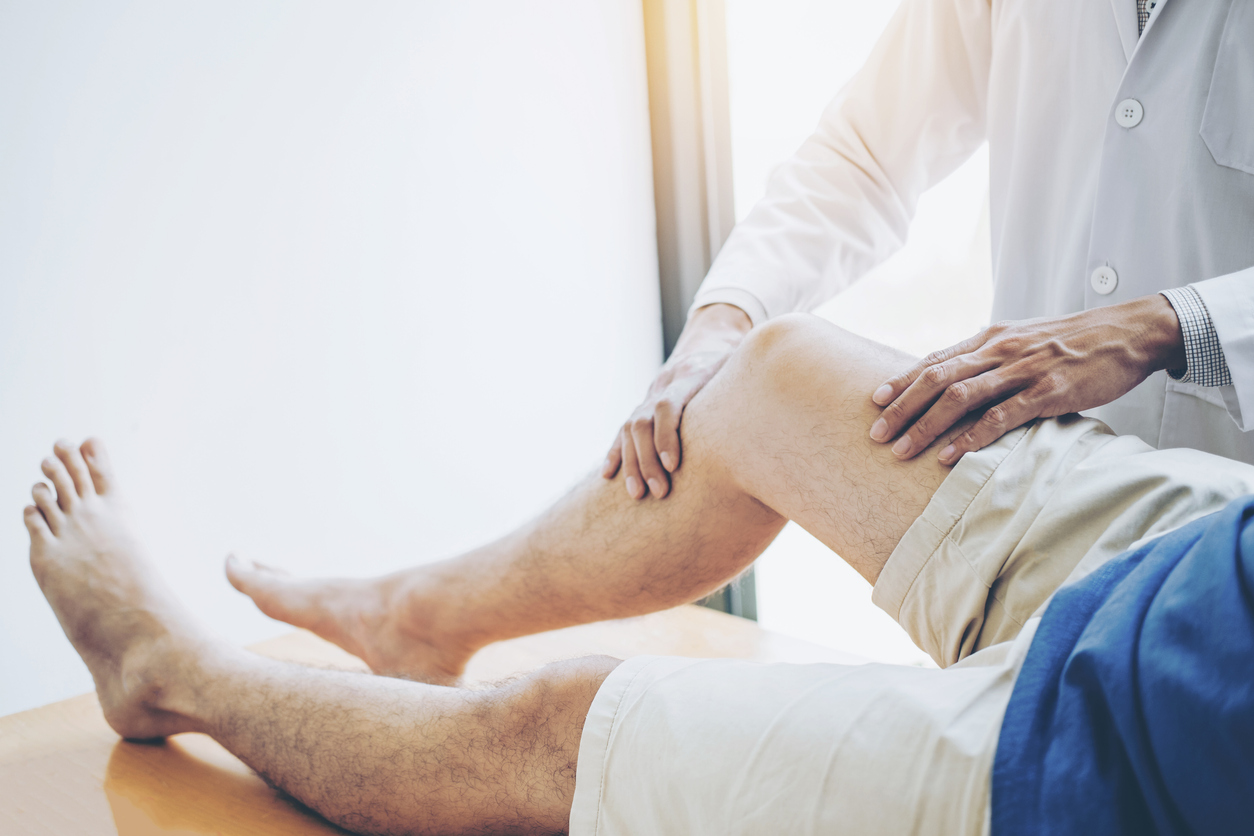
Venous insufficiency is the cause of both varicose veins and leg ulcers. Learn what that means for risks and treatments of both conditions.
Varicose veins and leg ulcers are linked by a shared root cause: venous insufficiency. That means that if you experience varicose veins, you are unfortunately more likely to have leg ulcers as well. But it also means that the treatment of varicose veins can actually help treat both issues at once.
Venous insufficiency — which causes varicose veins, as well as around 80% of leg ulcers — is a condition in which there is a breakdown in the veins’ ability to send blood from the legs back up to the heart. This occurs when the one-way valves that keep blood flowing to your heart weaken or when the veins themselves become scarred or blocked. The result is that your blood flows backward and pools in your legs, causing varicose veins. This increased pressure and fluid buildup can prevent oxygen and nutrients from reaching your legs, which causes cells to die. When this happens the tissue becomes damaged, resulting in the formation of a leg ulcer.
Table of Contents
ToggleWhat Are Leg Ulcers?
Venous, or varicose, ulcers are leg wounds that occur when the veins in a person’s leg don’t circulate the blood back up to the heart. The resulting pressure on the skin as a result of the backed-up blood can cause an open sore to form, especially following a cut or scrape. Venous ulcers usually occur in bony areas of the leg, around the ankles, on the calf, or on the backs of the knees.
Venous ulcers are typically shallow, red sores. They are often covered by a thin layer of yellow tissue and accompanied by tight or discolored skin surrounding the sore, along with swelling and even discharge. The skin around the ulcer may appear shiny and feel warm or hot. Some of the early symptoms of an ulcer include leg heaviness and cramping, dark purple, brown, or red hardened skin, and tingling or itching. If the sore becomes infected, you might experience symptoms like pus draining from the wound or a bad odor.
Common Risk Factors
Given that both leg ulcers and varicose veins share the same root cause of venous insufficiency, it’s unsurprising that the risk factors for both diseases are largely the same. Already having venous insufficiency or varicose veins increases the risk of developing leg ulcers. Therefore, any patient who is at risk for venous insufficiency may be at risk of developing a more serious condition.
The biggest risk factors for both leg ulcers and varicose veins are:
- Age: The risk of venous insufficiency increases as you get older.
- Gender: Women develop vein conditions more frequently than men do.
- Genetics: Venous insufficiency tends to run in families.
- Pregnancy: Women sometimes develop vein issues during pregnancy due to the increased pressure on their legs.
The Treatment Link
Studies have shown that there is a clear link between the treatment of varicose veins and leg ulcers. One study, in particular, demonstrated that early intervention to treat varicose veins results in ulcers healing more quickly than if they were treated by standard compression therapy alone. Given that both disorders are caused by venous insufficiency, it’s unsurprising that treating this underlying cause can improve both conditions.
Varicose veins can be treated with minimally invasive procedures, including sclerotherapy and ambulatory phlebectomy. If you are at risk for leg ulcers — especially if that risk is due to already having varicose veins — don’t hesitate to contact a doctor for advice on treatment options. At the Vein & Vascular Institute, we are here to help you determine the best treatment option for you.
